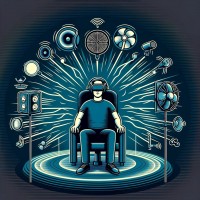
Beyond the Eye: Multisensory Contributions to the Sensation of Illusory Self-Motion (Vection)
Abstract
Vection is typically defined as the embodied illusion of self-motion in the absence of real physical movement through space. Vection can occur in real-life situations (e.g., ‘train illusion’) and in virtual environments and simulators. The vast majority of vection research focuses on vection caused by visual stimulation. Even though visually induced vection is arguably the most compelling type of vection, the role of nonvisual sensory inputs, such as auditory, biomechanical, tactile, and vestibular cues, have recently gained more attention. Non-visual cues can play an important role in inducing vection in two ways. First, nonvisual cues can affect the occurrence and strength of vection when added to corresponding visual information. Second, nonvisual cues can also elicit vection in the absence of visual information, for instance when observers are blindfolded or tested in darkness. The present paper provides a narrative review of the literature on multimodal contributions to vection. We will discuss both the theoretical and applied relevance of multisensory processing as related to the experience of vection and provide design considerations on how to enhance vection in various contexts.
Supplementary material is available online at: doi.org/10.6084/m9.figshare.24289216. An interactive online table of the reviewed multisensory vection papers is available here.